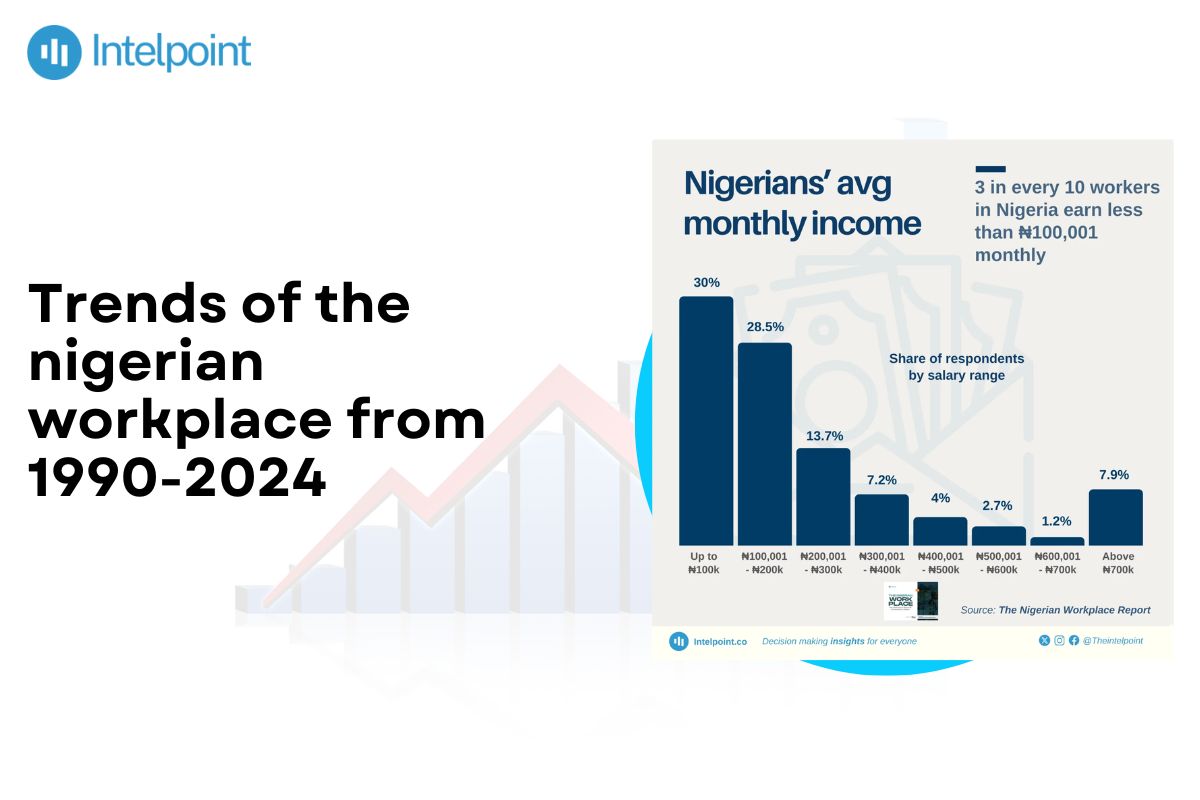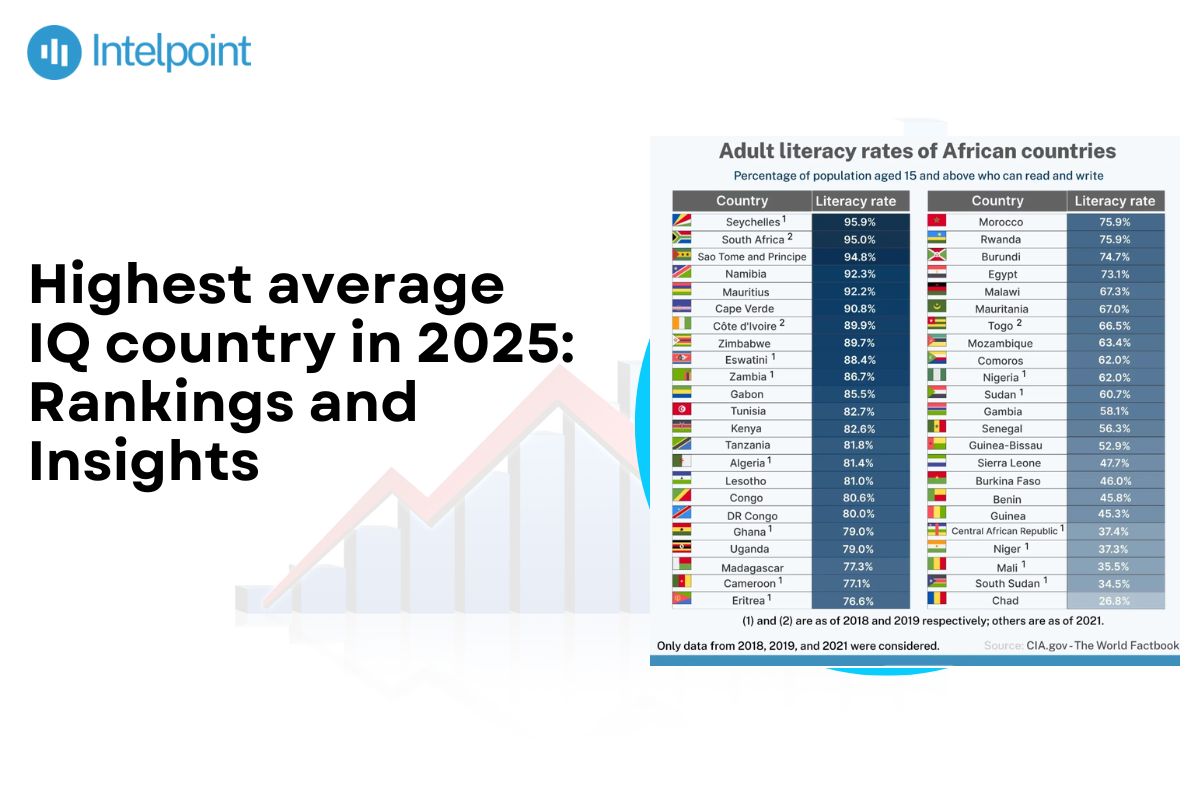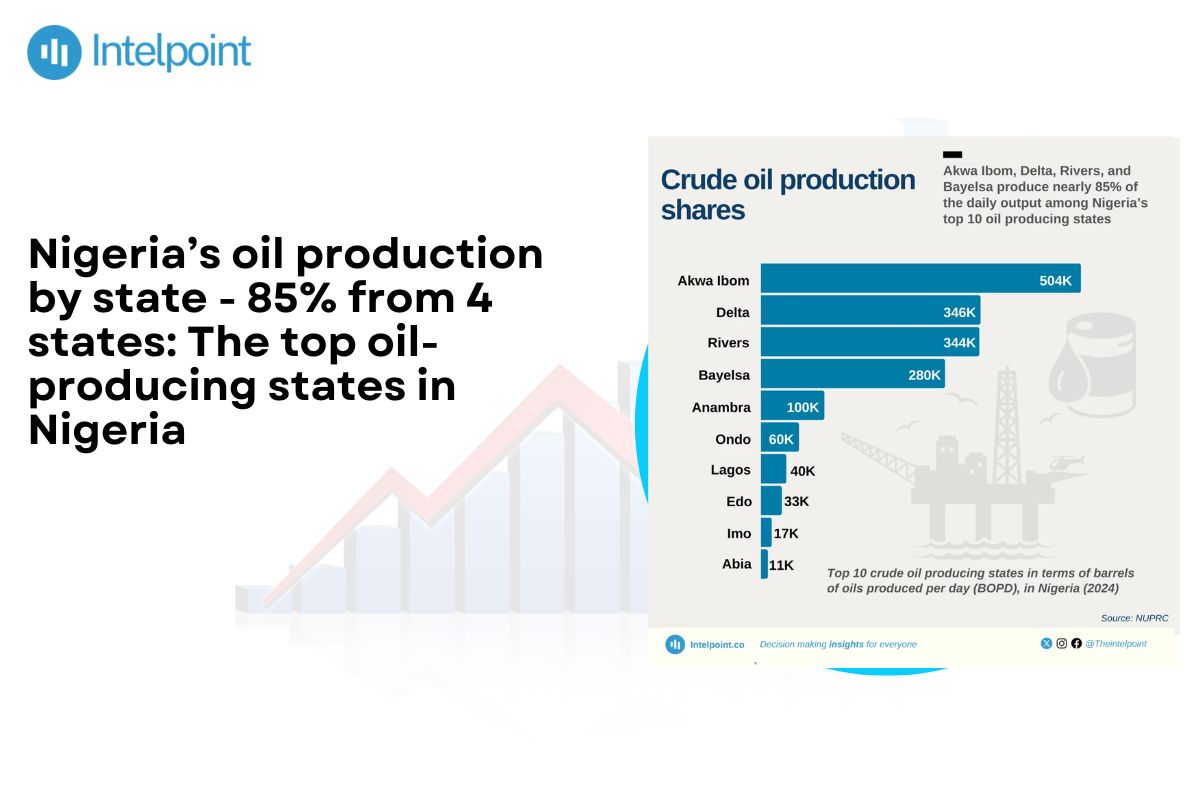Nigeria’s labour market has evolved significantly since 1990, when labour force participation was 60.7%. It declined slightly to 59.1% in 2023. The Nigerian workplace has continued to change from being predominantly industrial in structure to the present state, with an increasing shift towards a service-oriented sector, estimated at 47% of total employment in 2022.
Here’s a detailed table summarising the trends of the Nigerian workplace from 1990-2024:
| Period | Workplace Trends | Key Economic Influences |
| 1990-2000 | An average unemployment rate of 4.1%. | - The GDP growth fluctuated between 2% and 3%. - Political instability and inadequate infrastructure hindered economic progress. |
| 2000-2010 | The unemployment rate increased from 13.1% in 2000 to 19.7% in 2009. | - Increase in the labour force from approximately 54 million to over 60 million. GDP growth was at an average of 6% annually due to high oil prices. - Economic growth was unmatched by job creation in equal proportion. |
| 2010-2020 | General unemployment (all ages) rates increased significantly, reaching 23.1% in 2018 and 33.3% in Q4 2020. | - GDP growth averaged 5% annually until it contracted by 1.6% in 2016 due to a recession.- Youth unemployment exceeded 40% by 2020, signalling difficulties in absorbing the growing labour force. |
| 2021-2024 | The first signs of economic recovery after the COVID-19 pandemic began to appear. Unemployment rates dropped from 33.3% in 2020 to 4.1% in March 2023. | - GDP growth recovered to 3.3% in 2022 and fell back to 2.9% in 2023.- Inflation increased from 18.8% in 2022 to 24.5% in 2023. |
Key takeaways
- 1990-2000: About 70% of Nigeria's workforce engaged in agriculture, with a mean rate of 4.1% unemployment and GDP growth rates ranging from 2% to 3%.
- 2000-2010: Unemployment rose from 13.1% in 2000 to 19.7% in 2009, and the GDP grew by 6% annually.
- 2010-2020: Unemployment rose rapidly, reaching 23.1% in 2018 and 33.3% in Q4 2020.
- 2021-2024: Unemployment declined from 33.3% in 2020 to 4.3% in Q2 2024.
Meanwhile, information extracted from the 2024 Nigerian Workplace Report revealed that few employees under 30 remain with the same company for more than three years. However, as workers age, the pattern shifts; those above 40 are far more likely to remain with an employer for the long term.
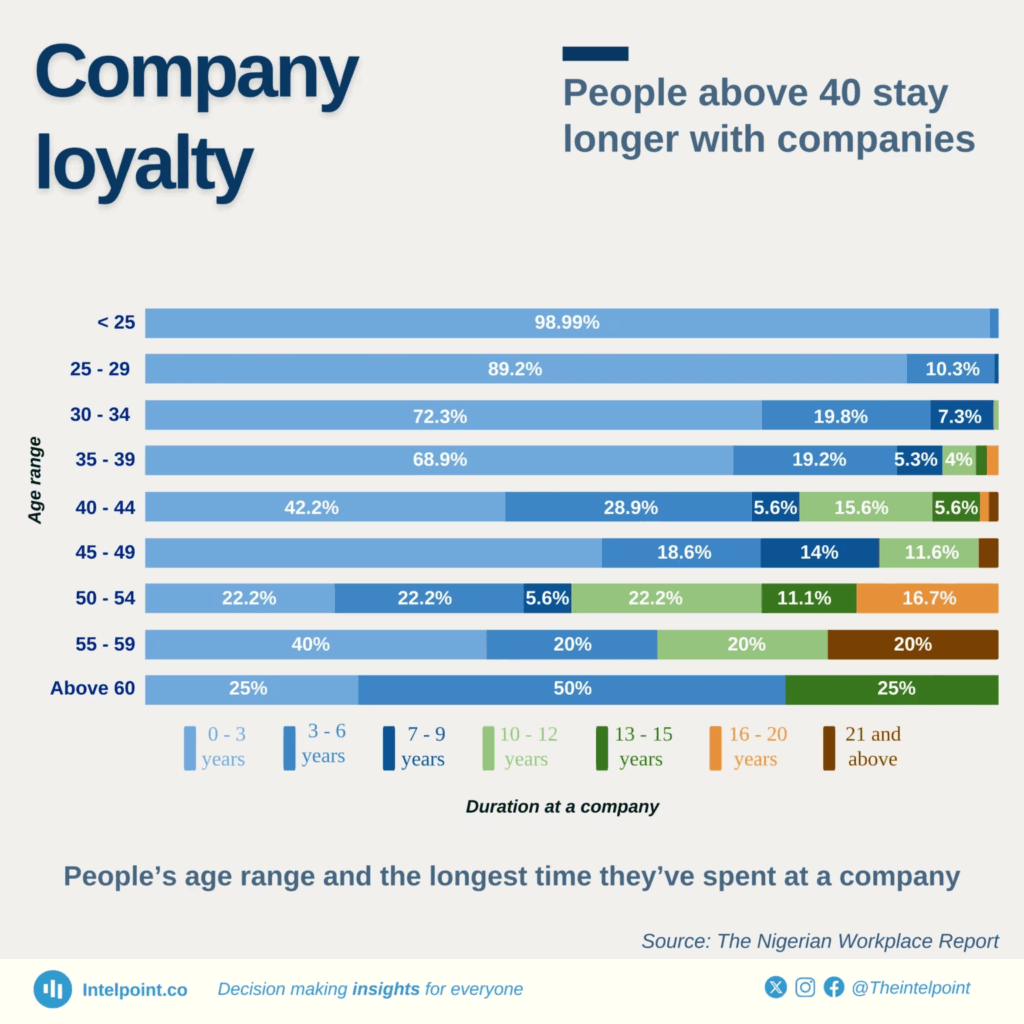
Trends of the nigerian workplace from 1990-2024
1990-2000: Agrarian dominance
Nigeria's economy was largely agrarian during the 1990s, with about 70% of the labour force employed in agriculture. The unemployment rate was generally low, averaging 4.1% annually. However, underemployment was high due to the seasonal nature of farming activities. Economic growth was typically slow, ranging from 2% to 3% annually, and was impeded by political instability and insufficient infrastructure.
2000-2010: Economic reforms and rising unemployment
Nigeria's economic reforms from 2000 to 2010 significantly enhanced the banking and telecommunications sectors. The unemployment rate went up from 13.1% in 2000 to 19.7% in 2009. Between 2000 and 2010, the workforce expanded from approximately 54 million to over 60 million. Soaring oil prices propelled GDP growth to around 6% annually.
2010-2020: Service sector expansion amidst rising unemployment
From 2010 to 2020, Nigeria's economy expanded by an average of 5% annually up to 2016, when it contracted by 1.6%. The share of employment from the services sector rose to 47% in 2022. The general unemployment rate for all ages went up to 23.1% in 2018 and grew to 33.3% in Q4 2020. More than a third (over 40%) of youths were unemployed towards the end of this period due to the growth of the population and the drop in oil prices in 2016.
2021-2024: Post-pandemic recovery and persistent challenges
Nigeria’s economy recovered from the COVID-19 shocks, with GDP growth of 3.3% in 2022 and 2.9% in 2023. The country's national jobless rate declined significantly from 33.3% towards the end of 2020 to 4.3% in Q2 2024. This movement was prompted by gains in labour force surveys and better performance of the informal sector. Inflation rose from 18.8% in 2022 to 24.5% in 2023, impacting real incomes.
The Nigerian Workplace Report indicates that over 50% of Nigeria’s working population earns less than ₦200,001 monthly.
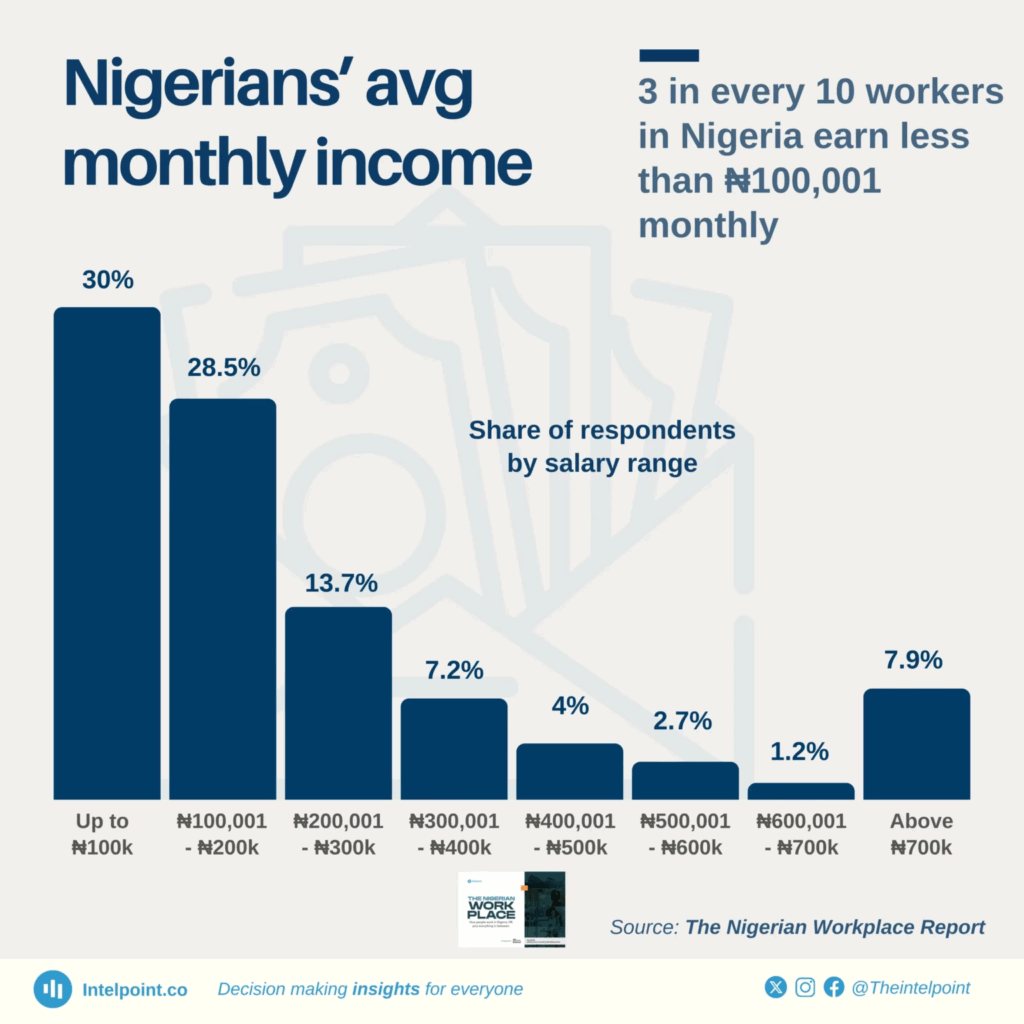
Nigerians’ average monthly income
The report further revealed that individuals earning above ₦600,000 are among the top 10% earners.
Conclusion
Over the past three decades, Nigeria’s employment structure has shifted from an agriculture-based economy to a more diversified one, with significant growth in the service sector. Unemployment rates have fluctuated, peaking at 33.3% in Q4 2020 and declining to 4.3% in Q2 2024. High youth unemployment and inflation remain significant challenges, necessitating targeted policy interventions in education, skills development, and economic diversification.

